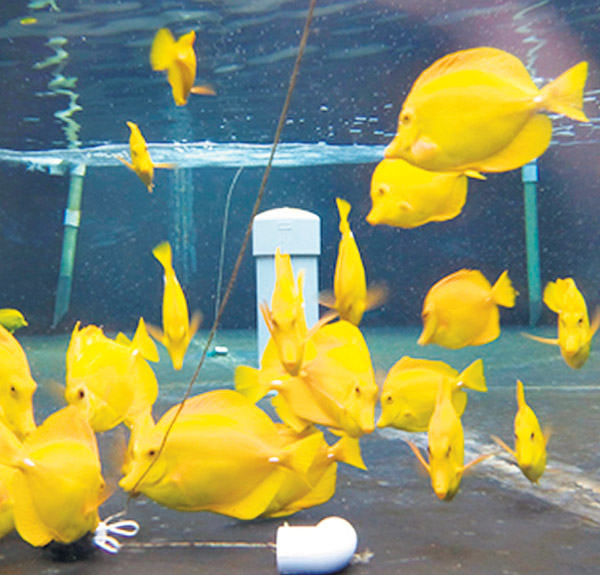Good News On Raising Tangs
Scientists at Oceanic Institute have announced a breakthrough that could be good news for both the aquarium industry and for Hawaii’s coral reefs.

Oceanic Institute has been making ‘significant breakthroughs’ in rearing and feeding technology for the yellow tang (‘Zebrasoma flavescens’), which could impact both the aquarium trade and reef protection measures in the future. Photo from Oceanic Institute.
Principal researcher Chatham Callan said that since 2001 they have devel- oped breeding techniques that improve prospects for raising the eggs of the sought-after yellow tang via aquaculture settings. And more recently, Callan and his team in OI’s finfish department have found a way to boost Zebrasoma flavescens’ survival rate past a critical growth period.
“We’ve developed rearing methods for both the larvae and their prey enabling them to eat and survive through the critical first- feeding stage, which up until now, has not been achieved,” he explained. The findings are published in Global Aquaculture Advocate’s Jan.-Feb. 2013 edition.
According to Callan, more than 300,000 of the vivid yellow, arrow-shaped tang are collected in the wild and exported from Hawaii each year for the aquarium trade. If they can be bred successfully in house, that helps conserve the reefs. “We’ve improved radi- cally, not only in total eggs, but also quality of eggs,” Callan said. The article reports that OI has gone from producing no viable eggs to a monthly yield of 1 million, a mean fertility rate of 84 percent and an egg viability rate of 51 percent.
Other team members working on yellow tang culture technology are Charles Laidley (Waikiki Aquarium), and OI colleagues Eric Martinson of Aina Haina, Michael Dean Kline and Melissa Rietfors.
Located next to Sea Life Park, Oceanic Institute is a research and teaching affiliate of Hawaii Pacific University.





